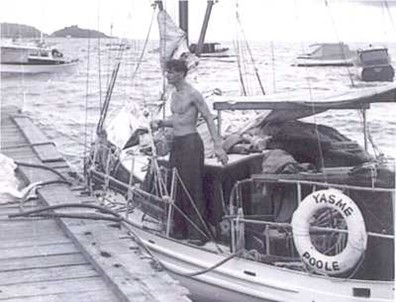Editor’s Note: Thanks especially to Hamgallery.com, managed by Tom Roscoe, K8CX, for several of the images used here. There are many, many more wonderful photos and graphics on his website for your enjoyment!
Hi there, I’m the president of the Yasme Foundation, an organization you might have heard of in a press release, on a scholarship, or when someone receives one of our Excellence Awards. Who are we and what is Yasme, anyway? This article will introduce and explain Yasme’s role in DXing history along with an overview of what we do today and hope to do tomorrow.
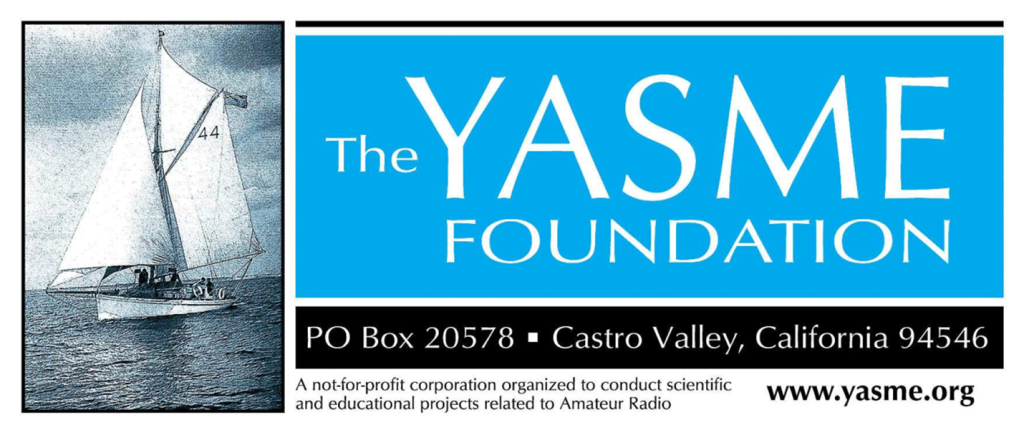
But first, what does “yasme” mean? It’s based on a Japanese word, “yasume,” which variously means “freedom” or “to make tranquil or peaceful.” It was the name of the sailboat—boats, actually—used by the original beneficiary of Yasme’s efforts, Danny Weil, G7DW at first and then, most famously, VP2VB. On to history…
Yasme and Early DX History
After World War II, amateur radio DXing benefited greatly from the enormous improvements in radio equipment. Excellent receivers and transmitters now enabled more hams to work more DX than ever before, and its portability helped the modern DXpedition take shape. In 1948, two groundbreaking DXpeditions took place: VP7NG to the Bahamas and the multi-call “Mountains of the Moon” expedition through Tanganyika (now Tanzania) and Uganda, with call signs like VQ5HGE. Other expeditions soon followed to islands and countries not nearly as easily reached as today. Throughout the 1950s, as sunspots appeared in unprecedented numbers, worldwide communication was in reach of even a modest station.
In the early 1950s, Danny Weil, a young British watchmaker, decided he would go to sea like many of his countrymen. After learning to sail, and with the intention of crossing the Atlantic solo, he purchased and refitted the YASME, a 40-foot single-mast yacht featuring a 10-hp motor. Someone suggested that he take along amateur radio gear to keep in touch, and soon he had his license, G7DW. He left The Gambia in 1954 and found himself in the British Virgin Islands only 22 days later. His activities caught the attention of DXers, and it was suggested that he sail around the Caribbean to activate a few of the islands, some of which had either never, or only briefly, been on the air. Danny operated by hand-sent CW and patiently developed into a skillful operator with quite a following.
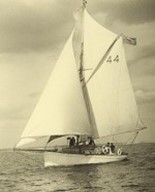
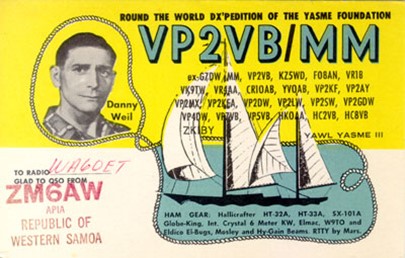
One thing led to another, and Danny soon found himself activating islands in the Pacific after transiting the Panama Canal. Navigation was based on paper charts. Unfortunately, Danny “discovered” an uncharted reef in the Gulf of Papua northeast of Australia in 1956, sinking the YASME and requiring a rescue from those shark-infested waters reminiscent of the closing scenes in Jaws. Undeterred, Danny received donations from the DX community and was soon once again afloat in the YASME II, activating numerous DX call signs. Solo sailing has its perils, and the YASME II went aground on rocks off of Grenada (now J3) in 1959 and was lost.
Was this to be the end of Danny’s adventures? Not hardly! Dick Spenceley, KV4AA, helped organize the Yasme Foundation to support Danny since he was willing to keep going. Soon, the YASME III was on the water and on the air in the world’s first multi-country, “round the world” DXpedition. (See the QSL card above for some of the calls Danny used.) The YASME III avoided unpleasant marine encounters, and Danny continued to put countries on the air until 1963 when he decided he’d had his fill. Following the VR2EO operation from Fiji, he sold the boat and returned to his original career of watchmaking in the Houston, Texas area for the next 40 years until his death in 2003. Danny had made over 100,000 QSOs (by hand and using paper logs) and was the fifth inductee into the CQ DX Hall of Fame.
Lloyd and Iris
At the conclusion of Danny’s adventures, the Yasme Foundation included about 2,500 members and had published four issues of the Yasme News to keep everyone up to date. (All four issues are available as PDFs at yasme.org.) Well, now what? The foundation was moribund. It still managed the remaining QSLs, but there wasn’t much else to do with no expeditions to support. Enter the Colvins, Lloyd, W6KG and Iris, W6QL. Both were active DXers who met in Europe after WWII, and, having retired from a successful construction business in 1963, intended to do some traveling. Iris suggested, in a fateful question, “Why don’t WE go?”
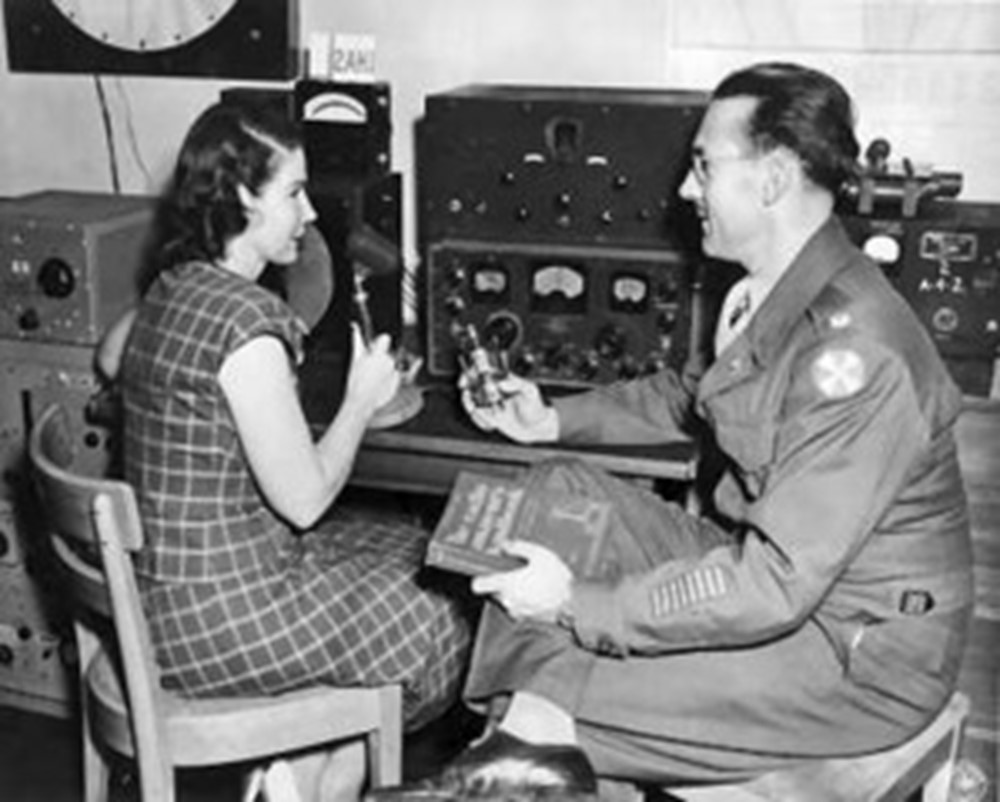
Lloyd and Iris Colvin in Germany, 1948
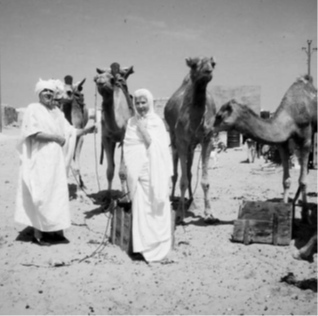
In Senegal, 1967
Yasme now had something to do! While the Colvins didn’t need financial support, the foundation was revived in 1965 and took on the job of managing the expedition’s QSL duties. Donations and contributions enabled the foundation’s endowment to grow and respond to the enormous number of cards that came in—more than one million QSOs, eventually!
The Colvins certainly “went,” traveling for 30 years and visiting 223 countries, operating from 169 of them. The Yasme style of QSL was well-known, and the call signs almost always ended with -KG or -QL. Their travels were chronicled by numerous DXing newsletters (no internet back then!).
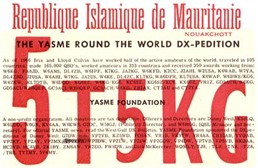
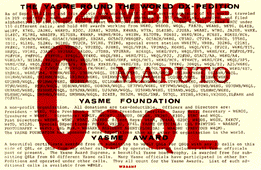
All of the QSLs were answered—100%—and kept carefully organized, eventually totaling more than 750,000. In 2006, the Colvins’ QSL collection was shipped to the Documentary Archives Radio Communication in Vienna, Austria where it is open for public inspection and research (dokufunk.org). If you sent Yasme a card, “it’s in there!”
The final Colvin expedition came in 1993 at TA1/W6QL. While in Istanbul, Lloyd died following a stroke. After Lloyd’s death, Iris hung up her mike and key, bringing their long and marvelous story to a close. It’s all wonderfully documented by Jim Cain, K1TN, in the captivating book, Yasme—The Danny Weil and Colvin Radio Expeditions. The entire book is available as a PDF at no charge, downloadable from the Yasme website at yasme.org. Lloyd’s estate made a bequest to the ARRL that established the Colvin Award. Following Iris’s death in 1998, the Colvin Family Trust established the current Yasme Foundation. If you want to know about how DXing took its modern form, Cain’s book lays it all out, including the Colvins’ contemporary cast of characters: Gus Browning, W4BPD; Don Miller, W9WNV (now AE6IY); Dick McKercher, WØMLY; and others.
Yasme Today
By the time Iris decided to retire from DXpeditioning, Yasme’s mission had grown to include grants and other awards. We are a Private Operating Foundation, incorporated in California and completely self-funded, requiring no donations or subscriptions. Our QSL manager still handles any and all requests for Yasme QSLs. We provide supporting grants to various worthy causes, including the Yasme Scholarships through the ARRL Foundation and the Foundation for Amateur Radio. The current directors and officers include the author as president, W6RGG (our senior member), W6OAT (treasurer), OH2BH, K3ZO, PB2T, K4ZW (vice president and secretary), N6VI, and 9V1YC.
With so many memorable DXpedition call signs, the foundation began awarding the Yasme Plaque and Trophy in 1965. These awards are given to anyone showing confirmations for the required number of contacts with Yasme Expeditions or operations by a current officer or director. The Yasme Plaque is awarded for 30 contacts and the Yasme Trophy—a model boat—requires 60 contacts. You might want to check your logbook! (A spreadsheet with all eligible calls is available at yasme.org.)
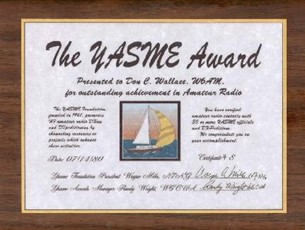
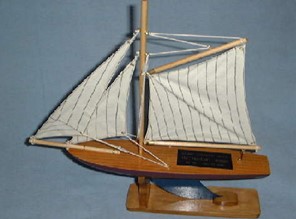
In 2008, we began the series of Yasme Excellence Awards. The goal is to recognize lesser-known individuals who make a significant contribution to amateur radio in some way. We make the awards for advancing technology, operating, or creating international cooperation and goodwill. The complete list of all awardees is posted at yasme.org. The award consists of a modest cash prize and crystal globe as shown below with 2012 awardees Joe Semjang, HS2JFW and Champ Muangamphun, E21EIC.
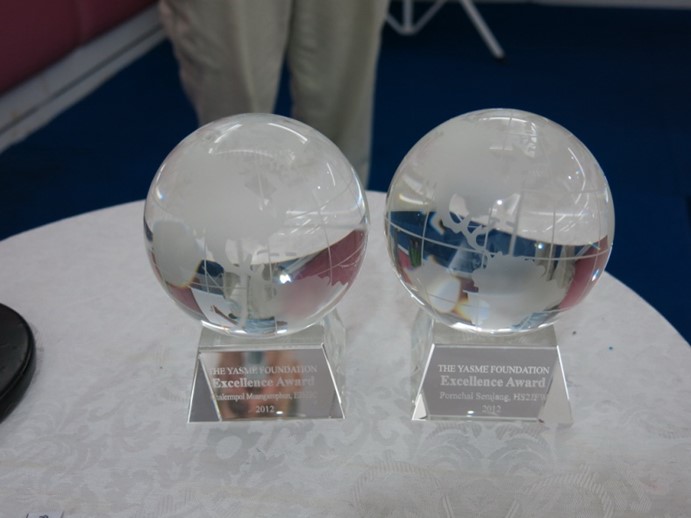
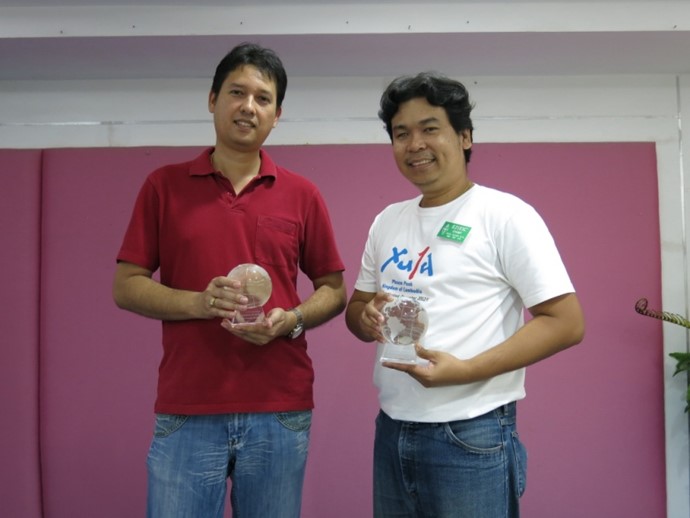
Yasme Tomorrow
Of course, we will continue our support of the grants and award programs. We are occasionally asked to support a DXpedition, but in a turnabout from those early days, there are so many excellent foundations supporting DXpeditions that we don’t feel the need to do that. We encourage all DXers and DX clubs to support these expensive and appreciated endeavors!
Our interests are in supporting the opening of ham radio around the world, helping expand privileges where limits are imposed, and supporting efforts to create an amateur radio service where activity is illegal or not allowed. We are particularly interested in what is often referred to as “Ham Radio 2.0.” If Ham Radio 1.0 represents the first century of spark, CW, phone, repeaters, computers, and the internet, Ham Radio 2.0 means “where do we go from here?”
Building on Ham Radio 1.0, tomorrow’s ham radio includes mobile and portable operation, such as the burgeoning -OTA (On The Air) groups led by Parks on the Air, Islands on the Air, Summits on the Air, World Wide Flora and Fauna, and more. Youngsters/Youth on the Air (YOTA) is bringing many younger operators into ham radio on their own terms and with their own interests.
Scientific researchers are partnering with ham radio groups like HamSCI (hamsci.org) to conduct monitoring of ionospheric and space weather. Special events like 2017’s Solar Eclipse QSO Party (two more are coming in 2023 and 2024!) and others involve individual hams in high-quality research.
Remote control and low-profile stations, including traditional clubs and “spaces” such as maker spaces, are developing ham stations and other shared and hybrid systems and activities. Along with innovative digital modes, many amateurs are getting on the air who would otherwise be unable to construct a more traditional station due to land restrictions or the ever-rising noise floors on all amateur bands.
Just as Yasme was formed in response to the new and exciting activity of DXpeditions, ham radio is certainly changing—but key elements will remain. Relationships will continue to hold us all together across many interests. Innovation will “advance the radio art,” as we have been charged with since our inception. We will compete and compare our capabilities, creating trained and skilled operators. It will all still be about individuals making up a shared community, as it has been for more than a century. Go for it, just as Danny Weil did 70 years ago!
